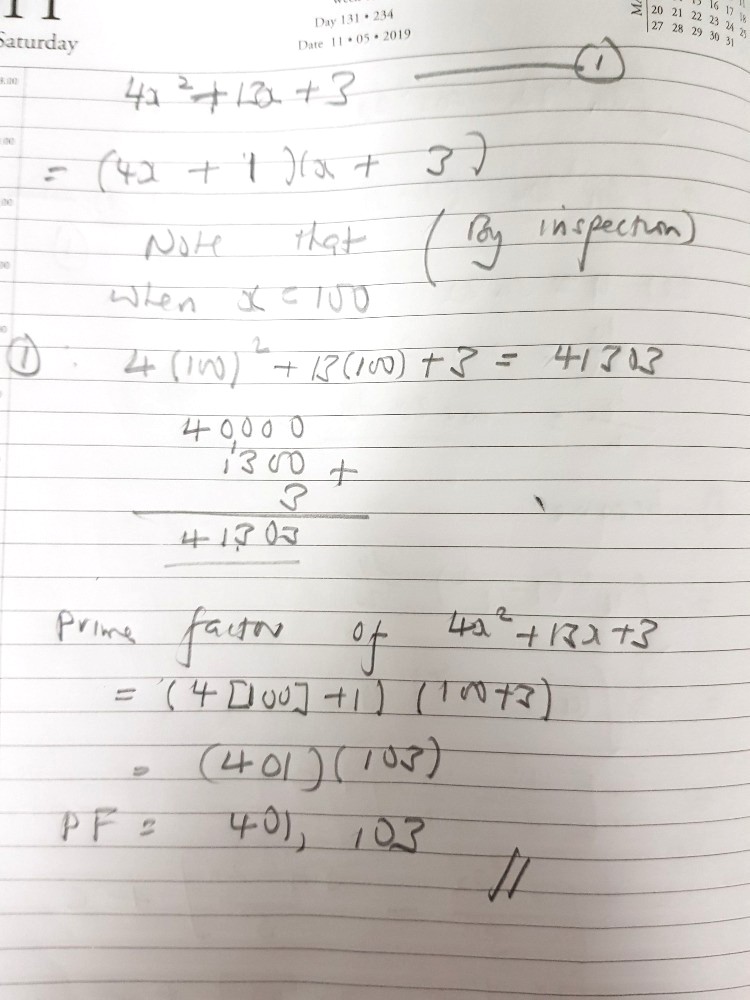Ask Singapore Homework?
Upload a photo of a Singapore homework and someone will email you the solution for free.

Question
secondary 4 | E Maths
One Answer Below
Anyone can contribute an answer, even non-tutors.

I don’t understand the question?
= (4x + 1)(x + 3)
You can do this by the usual method you're taught.
Now notice that the numbers in 41303 look very similar to the coefficients of the quadratic equation above.
The idea here is to rewrite the number as a sum of 3 numbers, then factor out the corresponding coefficients of the quadratic equation for each number.
41303 = 40000 + 1300 + 3
= 4 x 100 x 100 + 13 x 100 + 3
= 4 (100)² + 13(100) + 3
If you let 41303 = 4x² + 13x + 3,
Then 4(100)² + 13(100) + 3 = 4x² + 13x + 3
Compare the two sides and you'll realise x = 100
Since (4x + 1)(x + 3) cannot factorised further, they must be the prime factors of 4x² + 13x + 3. Recall that the prime factor can only be divided by 1 or itself.
Since x = 100, the prime factors of 41303 would be
4(100) + 1 = 401
And
100 + 3 = 103.
In this instance, yes, 401 and 103 are indeed prime numbers. I have compared this against the list of prime numbers.
However, this only works for some values of x. For example, x = 1000 fails because 1003 is not a prime number (1003 = 17 x 59). In other words, if x = 1000, then 4013003 = 4001 x 1003 is not the simplest we can go.
Students tend to assume that the two numbers obtained are prime without bothering to check whether these numbers are actually prime or not.
The setters typically would not be so evil/tricky to put the factors as non prime, and expect the student do an extra step of further factorisation. So far in my experience there hasn't been any question like this.
This question is likely to have been designed by first coming up with (4x + 1)(x + 3), then using a suitable value of x to get prime factors, before expanding to get 4x² + 13x + 3.
Of course if the student wants to be absolutely sure he/she can always check..
See 1 Answer

Then by inspection you test for value of x. Note the last number 3 of the eqn match the last digit of 41303. Roughly you guess the value of x.
Once x is determine, you proceed to insert the x value into the 2 factors.





